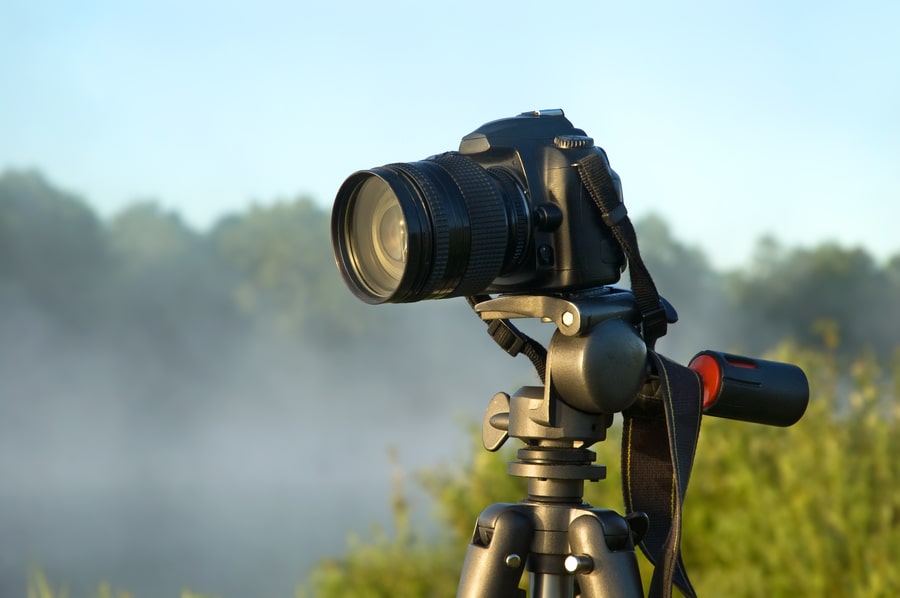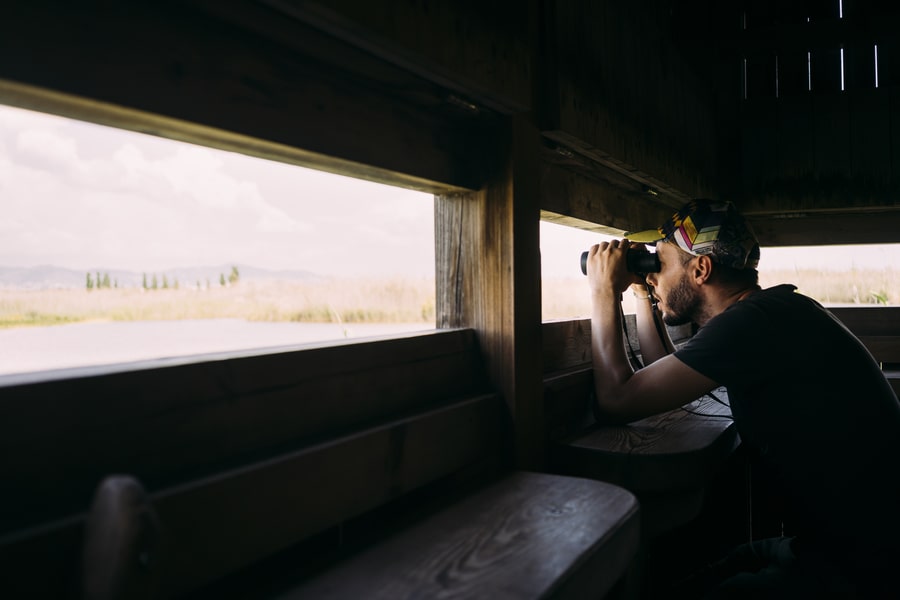Did you catch a glimpse of the majestic great horned owl swooping in on its prey so you decided to start birdwatching? Or did the energy of a simple warbler intrigue you enough that you wanted to see more? There’s a plethora of reasons how people get hooked on birding, but one thing’s in common – once you start, you want more. And that gets us to the equipment for bird watching you need, if you want to do it properly.
But don’t fret too much, getting basic bird watching gear won’t break the bank. The latest report from the U.S. Fish and Wildlife Service estimated that there are around 45 million birders in the U.S and that report was back in 2019. If the hobby was too expensive, nowhere near that number of people would be able to afford it. And you can always start out small and upgrade as you get more experienced.
This article will cover the basic equipment for bird watching every novice needs (with a few tips on how to build a birding social circle sprinkled in). But even experienced birders can probably learn a thing or two, as new birding gear regularly gets put on the market. In any case, let’s start talking about birdwatching equipment.
Essential Birding Gear

There are 5 essential things every new birdwatcher needs: some viewing equipment, a camera to capture what you’re seeing, a way to attract birds, something to understand what you’re seeing, and a way to keep records and build memories. You can build from there, but these 5 pieces are where you should start with.
A Monocular or a Pair of Binoculars
Identifying birds is the core of birdwatching. And to identify a bird, you need to see it clearly. So a monocular or a pair of binoculars is the essential tool you need to start out birding. Traditionally, binoculars were used for bird watching, but monoculars are becoming more and more popular.
There’s no right or wrong choice here, it’s about what you feel comfortable with and what your budget can handle. You can get binoculars and monoculars with the same magnification power; however, a good monocular for birdwatching is usually cheaper than comparable monoculars. Here are the pros of each:
Binoculars
- Better depth perception.
- Less eye strain.
Monocular
- Cheaper than comparable binoculars.
- Lighter and more portable.
- Often has a larger lens, so performs better in low-light settings.
- Can be fitted onto a camera for magnified pictures.
Feeders

Do you always need to go out searching for birds? Of course not. Plant a bird feeder in your backyard and have the birds come to you. You will only be able to observe the birds that live in your area, but bird biodiversity is so wide-ranging, that it’s unlikely you’ll ever get bored.
And you can always set up your feeder so that it attracts specific or new types of birds that you haven’t seen yet. There are so many types of feeders, bird feed, and tactics that are used, that it takes years to learn, and you can start learning about it here.
A Good Camera

You’ve got your viewing equipment and a way to attract birds, so now you need a way to capture what you see. And a camera is the obvious choice. You can always get a high-end camera after you are experienced enough, but most modern phone cameras are more than enough to start out.
So, a camera is definitely an essential piece of equipment for bird watching, but that doesn’t mean you have to buy one. Just have your phone with you at all times and upgrade if you feel the need. And this is where monoculars come in handy again – unlike a binocular, you can attach a monocular to your phone and get clearer, zoomed-in pictures of the birds you viewing.
A Detailed Field Guide

Now that you’ve got a way to attract birds, view them, and catch them on cam - what’s left? Knowing what you’re seeing. Even the most experienced birdwatchers have birdwatching field guides on hand at all times. The Sibley Guides are some of the most popular, but there are many region-specific and state field guides you can get.
Life List
Many birders are obsessed with keeping lists of the birds they’ve seen in their lifetime. There’s even a special name for it – listers. Even if you don’t think you’ll ever need detailed records of the birds you’ve seen, start keeping a life list from the very start, so that you don’t regret it later. Whether you’re going to keep records in digital or print form is fully up to you.
Birding Clothes
Birdwatchers that range outdoors for longer periods of time have a specific look (that’s not necessarily the most fashionable one). But there’s a very good reason to wear each piece of birding clothing and it comes down to practicality.
Comfy Boots/Shoes
Comfortable boots or shoes are a must for birdwatching. There’s no way around it. If you’re going to spend hours outdoors trekking through the brush, climbing hills, or on an extensive field trip, a good pair of sturdy but comfortable boots is a lifesaver. Good boots are an essential part of equipment for bird watching.
Birding Vest/Pack
You need a way to carry all of your equipment and that’s where a birding vest or pack comes in. Choosing between a vest or pack is purely personal preference, as is what kind of vest or pack you’re getting. Over time, you will find out what you feel most comfortable with, but make sure you start out with something that lets you carry your birding gear.
Wide-Brimmed Hat
Finally, we get to hats. It’s almost impossible to catch a birdwatcher out in the field without a wide-brimmed hat. Sunburn is the bane of many a birder and many go the extra mile and leave no skin exposed. Even if you don’t intend to go that far, a wide-brimmed hat is still an essential piece of equipment for birdwatching. Besides saving you from sunburn, it also keeps the sun out of your eyes so you’ll have a clearer picture of the bird you’re viewing.
Not Exactly Birdwatching Equipment, But Still Important
We’ve covered all the essential birdwatching equipment, but there’s still one more thing every new birder needs.
A Social Circle
You can watch birds solo from your back porch, but birding is as much a social activity as it is a hobby. You can learn the most about birdwatching from other birders, find out what birds can be found in your area, learn about upcoming events, and join field trips.
At the end of the day, birdwatchers are one big community. You can go to the American Birding Association’s What’s this Bird Facebook page to ask questions about the birds you’ve seen or find a bird club near you if you want face-to-face interactions. What you chose is up to you, but birdwatching is much more fun if you interact with people that share your interest.
Need Some Viewing Equipment?
You can get the Go-Anywhere Monocular and take it on all of your trips. It has 10x magnification power, a fully multi-coated lens, can be attached to almost any device, and is water-proof, shock- and crush-resistant on top. Pop it in your vest pocket and forget about it until you need to pull it out.